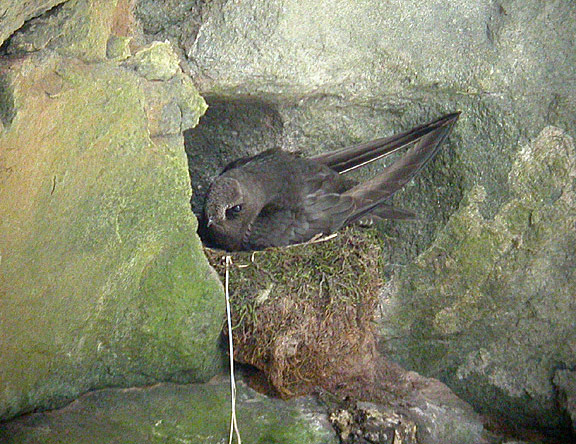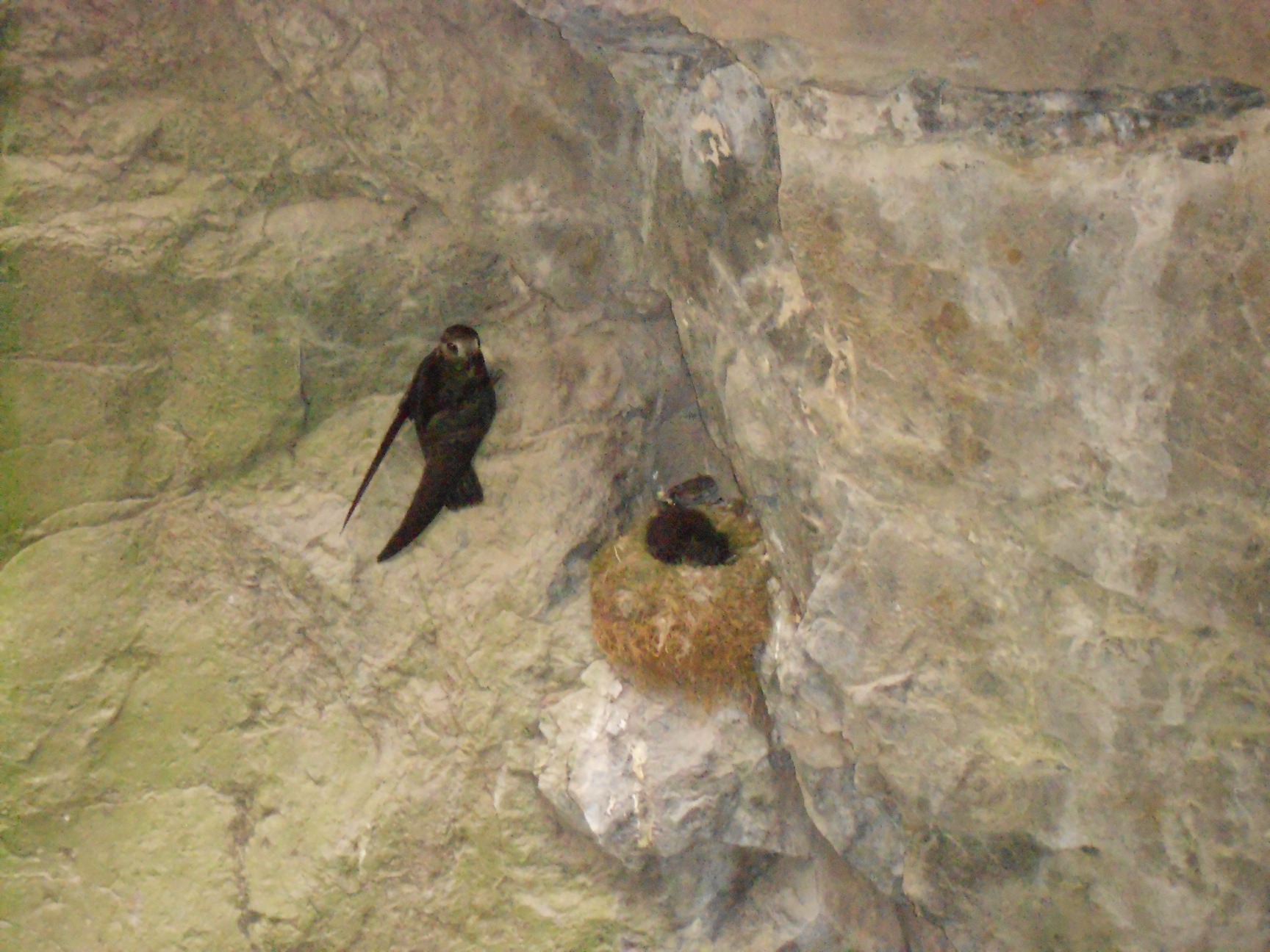Black Swifts are found in some pretty remote, gnarly locales. Their nests cling to sides of coastal cliffs, caves and rock faces behind mountain waterfalls, places where shade, cool temperatures and humidity persist. As our climate heats up, decreased snow packs and earlier spring snowmelt could negatively impact the humidity and temperature at swift nesting colonies, decreasing viable Black Swift breeding habitat in North America. The Black Swift was designated as a species of Conservation Concern by the U.S. Fish and Wildlife Service in 2008 and recently made the Watch List in the latest State of the Birds report because of troubling declines and high threats.

Many Black Swift nest sites are found on sheer cliffs and behind waterfalls. Photo by Bill Schmoker.
Biologists Kim Potter with the U.S. Forest Service, independent researcher Carolyn Gunn and Jason Beason with Rocky Mountain Bird Observatory are studying the North American population of Black Swifts to aid in the conservation of this species. Recently, using geolocator data, the team discovered that Black Swifts breeding in Colorado winter in Brazil, opening the door to annual life cycle conservation, and the researchers are now working to better understand the swifts’ migration, diet and distribution. This past summer, the team visited nesting sites in California, Idaho and Colorado to further this research.
Fewer Swifts Found This Summer
In July, Kim, Carolyn and Jason joined fellow Black Swift research Dr. Charles Collins at Lawler Falls in the San Jacinto Mountains east of Los Angeles to deploy geolocators on Black Swifts there. While this colony had once consisted of at least seven breeding pairs, no Black Swifts were found at the site, with only one old and unused nest still visible.
The team then headed north to Shadow Falls in the Idaho Panhandle National Forests, where they had deployed two geolocators on Black Swifts in 2013. During night visits to the falls, they counted 12 adult Black Swifts. However, no adults wearing geolocators returned, and the researchers found only two active nests compared to eight active nests the previous summer.
Back home in Colorado, the team hiked to Fulton Resurgence Cave in the Flat Tops Wilderness north of Rifle in late August to band swifts in the wee morning hours. Kim, Carolyn and Jason successfully captured 10 adult Black Swifts (seven that were already banded and three new adults that were given bands) and banded six nestlings. One banded adult female has been recaptured by Kim every year for the past nine years! And two of the recaptured adults were females that had carried geolocators to Brazil and back during the 2009-2010 migration, which helped to reveal the swifts’ wintering grounds. Also, in early September, Jason, Carolyn and fellow swift researcher Sue Hirshman visited Box Canyon outside Ouray, Colorado, with participants of a tour hosted by RMBO to view Black Swifts.

A female Black Swift perches next to her nest, occupied by a nestling, in Box Canyon. Photo by Carolyn Gunn.
It’s worth noting that numbers of Black Swifts nesting at individual colonies, like those visited by the team this past summer, can vary greatly from year to year, with scarce information on why this is so. In the case of Lawler Falls, a recent drought in southern California has caused the falls to nearly dry up, which is likely the reason the swifts were not found this year. It’s much more difficult to say why the colony at Shadow Falls in Idaho had so few active nests in 2014. Long-term monitoring like this, though, is critical for understanding population trends over time and the potential impact of climate change.
With the 2014 field season wrapped up, the team is already making plans for next year, including returning to Zapata Falls in the San Luis Valley of Colorado to band swifts as done in previous years. They also have submitted a manuscript for publication on the Black Swift’s diet and are updating information on phenology and nesting success of Black Swifts at Box Canyon.
Support Black Swift Conservation!
Support for this work comes from the Audubon Society of Greater Denver, Colorado Field Ornithologists and the U.S. Forest Service, but much of the funding comes from RMBO members and people like you who care about bird and habitat conservation. Your support is critical for Black Swift research to continue! To donate, visit our Chip in! page and designate your gift to the Levad fund.


